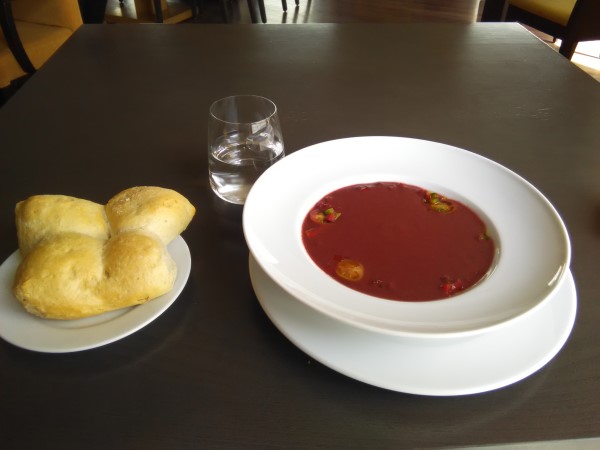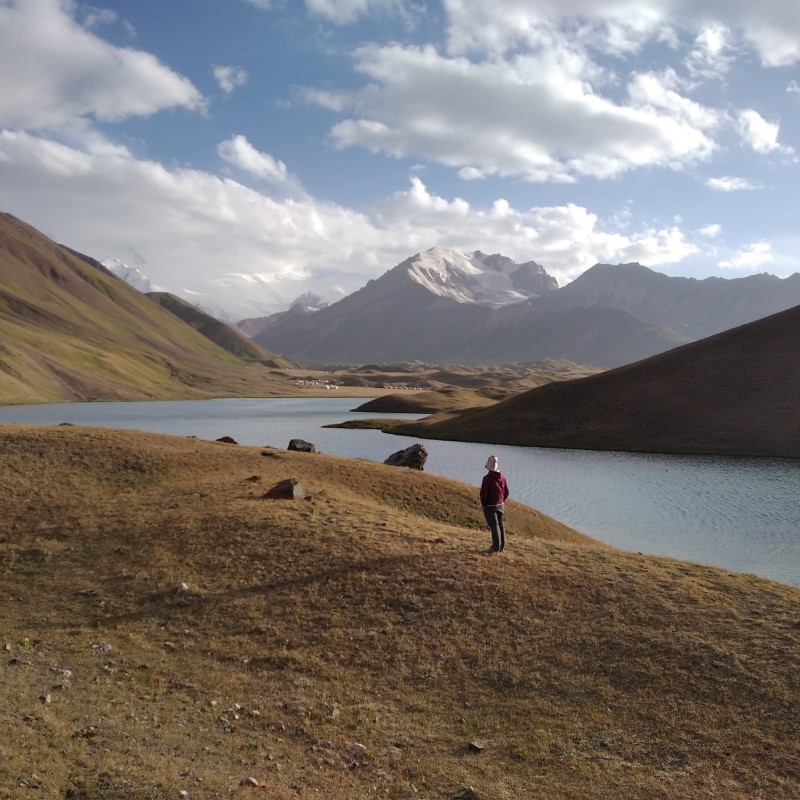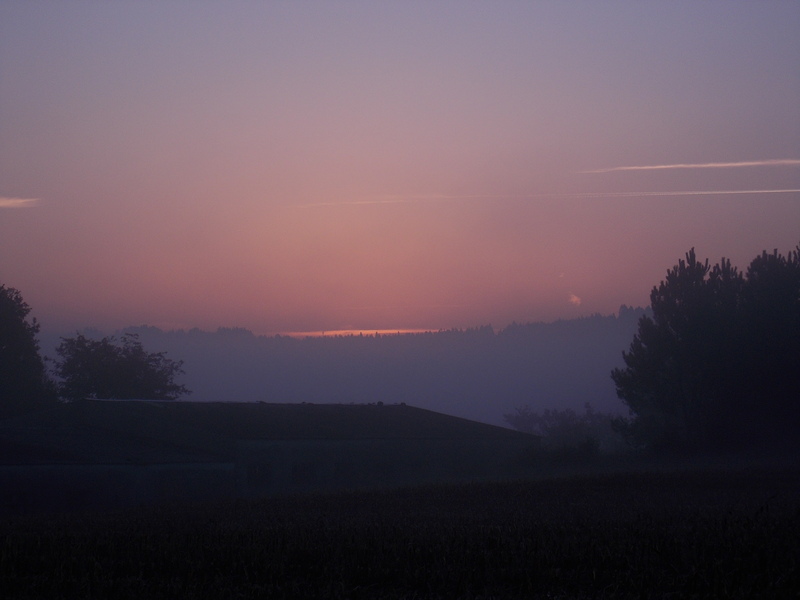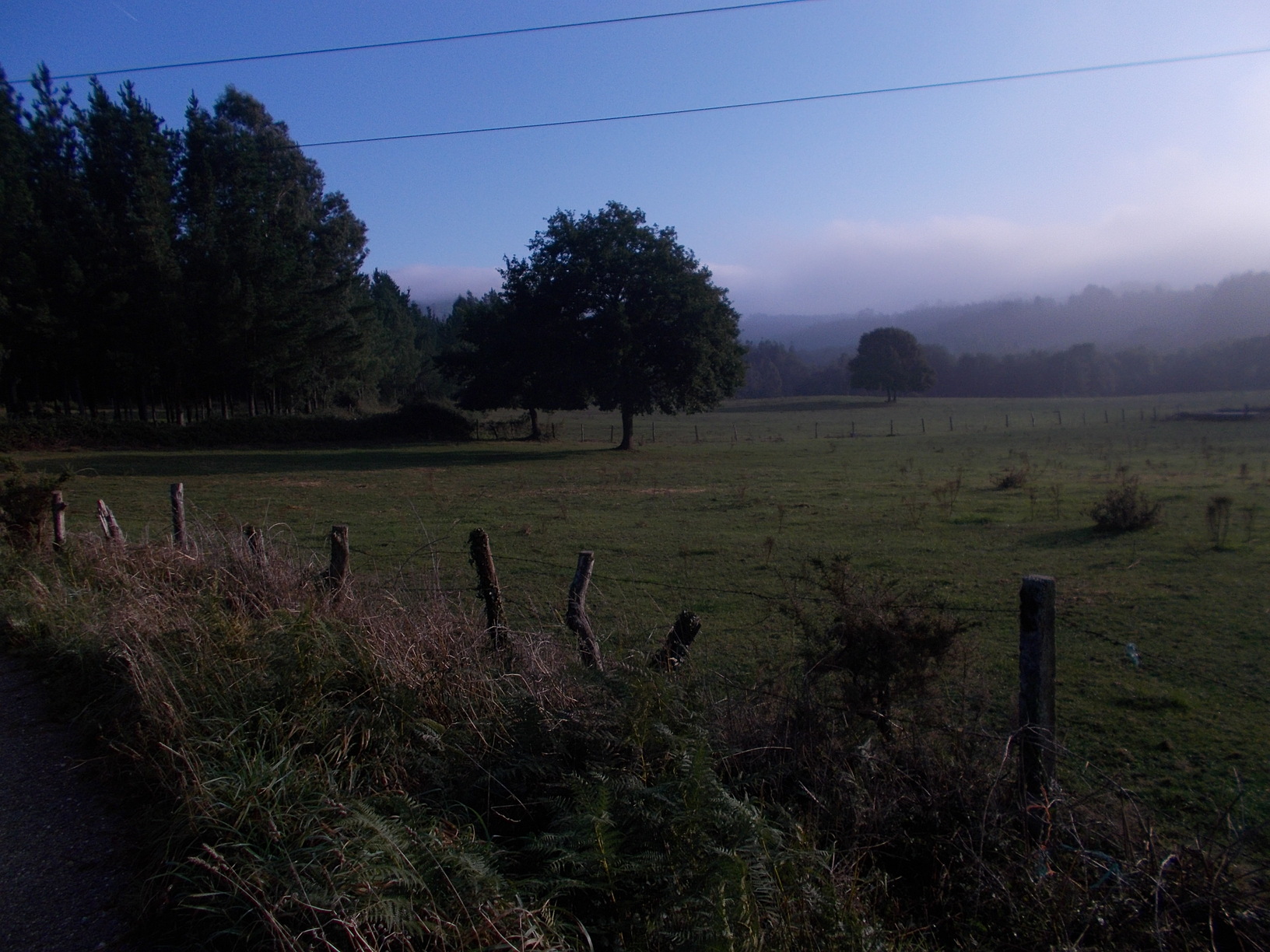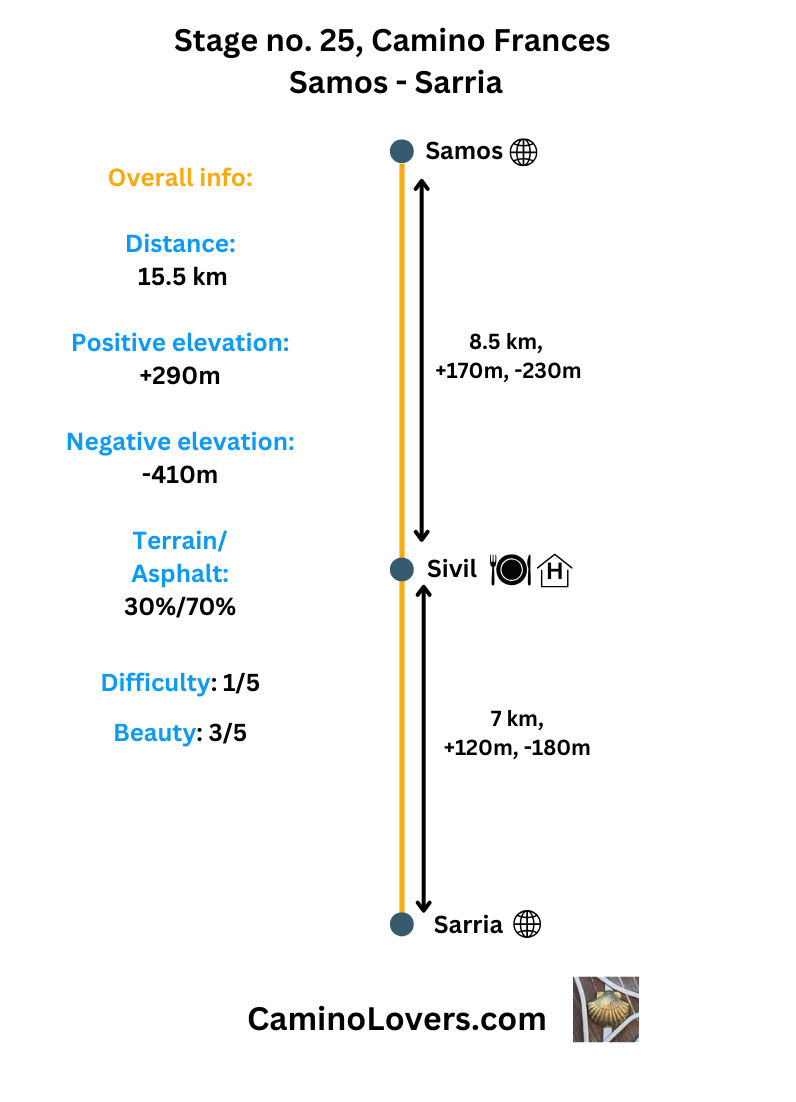
Basic Information
- Starting Point: Samos, Spain (530m). Monastic town dominated by the massive Benedictine Abbey. Beautiful town with three pilgrim albergues (one directly in the monastic complex), some private accommodation options and all services for pilgrims, including a shop and a pharmacy. Never too touristic, and with some nice quiet spots to spend the afternoon in a reflective mood.
- Ending Point: Sarria, Spain (415m). The most popular starting point for pilgrims, 115 kilometers away from Santiago de Compostela. Here a different pilgrimage starts, with a huge variety of people on the trails, including organized tours, bus-tours, big groups of Spanish pilgrims etc. Over 20 pilgrim albergues, with some new ones opening (and also closing) each year. You can count with all facilities for pilgrims and tourists. Making reservation in advance is highly recommended from here onward all the way to Santiago, because in high season the number of albergues is still insufficient for the number of pilgrims passing by.
- Availability of an alternative route: YES, a route that follows provincial road LU-633, a road that typically ins’t busy with cars. However, I do not recommend this option, since the official camino route is much nicer. Following the alternative route makes sense only in case of very bad weather (which can sometimes be the case in Galicia :)), or when you want to get away from the crowds for a while.
- Distance: Official camino: 15.5 km (download GPS here). Alternative way: 12.5 km (download GPS here).
- Online Map: Official camino: here. Alternative route: here.
- Elevation Difference:
- Official camino: + 290 meters ascent, – 410 meters descent.
- Alternative route: + 180 meters ascent, – 300 meters descent.
- Difficulty Score: 1/5: Short and easy, with not too much elevation to cover. Good stage to rest, and also, since it is so short, it gives you an option to actually walk one and half stage, and again escape the crowds a bit, because most people follow the “official stages” of these last 100 kilometers.
- Beauty Score: 3/5. Especially the first part along the River Sarria valley is very nice, but overall it is a decent stage passing through Galicean countryside.
- Terrain/Asphalt Ratio: 30% trails, 70% asphalt, on the road, or very close to it.
- Next stage: Camino Frances Stage no. 26, Sarria – Portomarin.
- Previous stage: Camino Frances Stage no. 24, O Cebreiro – Samos.
Elevation profile for the routes

– Official Camino, while you drop more elevation than you gain, there are quite a few short but steep climbs all over the stage. This is characteristic for Galicia in general–it simply isn’t as flat as the previous parts of the Camino Frances.

– Alternative route following the provincial road. As you can see it is much flatter in general, wit just a handful of short hills/downhills. It is also 3 kilometers shorter.
Advanced Info About the Stage
- Trail Marking: The official route is very well marked, with plenty of yellow arrows and even stones left by pilgrim on crossroads where the marking can be misleading in certain weather conditions (such as fog). On the road variant the yellow arrows are sparser, but since you always follow the road, in the same direction, there’s no way of getting lost, even on a foggy day.
- Natural Highlights: Nothing worth a special mention, but the first part in the river valley is very nice. You will pass by (sometimes very close to the route, sometimes a bit further) some watermills, one is for example here, another one here.
- Historical & Cultural highlights: Along the route you can observe the typical architecture of rural Galicia, with some huge houses that still serve for whole families tending to cows and other domestic animals (but primarily cows, animals that dominate Galicean countryside). Many of them are abandoned though, since younger people prefer to move to towns, and the rural Galicia is slowly getting depopulated. You will also pass along some nice small chapels, directly on the camino, with no need to make any detour. In Sarria there are some churches and nice buildings, but honestly there isn’t that much to see, maybe with the exception of Monasterio de Magdalena, location on Google maps here. However, since it is hot-spot of Camino Frances, the most common starting point, you will find all sorts of restaurants there, including some Italian places for example. That’s a nice change after the routine you had with the repetitive pilgrim menus on your way in the last couple of weeks.
- Camping/Bivouac Options: There is one official camping place near Sarria, called Camping & Glamping Vila de Sarria. It offers either option to stay in the bungalows on site, or pitch your own tent (the more economical option). Dogs are allowed. The camping has overall a great reputation, is clean, with good restaurant on-site, nice pitches in shade, and it is quite frequented by pilgrims in the high season on the camino. Prices are reasonable though they change according to the season. In most cases you’ll be able to stay there for below 12 euro/night with your tent. Location and reviews on Google maps here. When it comes to wild camping, things get really hard from here onward to Santiago. Having said that, in a high season, when all albergues are full, police is more tolerant to pilgrims sleeping outside, be it in the field, in the town park, or even in a square. When there’s no place to sleep outside, what can the pilgrims do, after all? Just make sure to avoid camping/bivouacking on private property, and you should be fine. Having said that, while it is nice to be able to sleep on a square or in a town park, you won’t get much sleep there. So my suggestion is to always try to find an albergue first, official camping as a second option, and the wild camping/bivouacking in the parks/squares just as a last resort really, when there’s no other option.
- Dog-Friendly Score: 3/5: In Galicia you won’t have problems with water, or with enough shade for your dog. Also, the closer you get to Santiago, the less lose dogs running around randomly will you meet on the trail. On the other hand, there is quite a bit of road walking and loads of people, and the albergues in this zone aren’t particularly dog-friendly. Two albergues that accept dogs in Sarria are Albergue Oasis, location and reviews on Google maps here, and Albergue San Lazaro, location on Google maps here. The second one accepts dogs only in private rooms, but it is better than nothing.
- Special Remarks: You enter a new territory here, the infamous “last 100 km of Camino Frances”. My recommendation is to prepare for it, and take it as a lesson of patience and tolerance. Of course it can be annoying seeing all these people with small backpacks (or no backpacks), walking in big groups, chatting and singing, barely noticing the scenery, with their support buses and vans. It can also be annoying having to call 10 albergues just to get a bed somewhere. But it is also a part of the Camino, whether we like it or not, and for some of these people, walking 115 kilometers over 5 days can be a real challenge, even without a backpack. And for you, it is a good test whether the Camino taught you to be more compassionate towards others, more tolerant and patient, and ready to accept things as they are once you cannot really change them.
My picks for accommodation on this stage
In Sarria, it isn’t about choosing an albergue that you like, it is about finding an empty bed in some albergue. This is true basically all the time from early May to late October. However, if you walk in low season, and can actually choose where to stay, I will recommend one of the following places:
- Albergue Oasis. One of the smallest albergues in Sarria, with “only” 27 beds in 4 rooms. Prices start from 14 euro/bed, but can go up slightly in high season. It has good communal spaces both outside and inside the house, well-equipped kitchen, and for the standards of Sarria, it is relatively quiet too. Location and reviews on Google maps here. You can make a reservation on the following phone numbers: 982535516, 605948644, or directly on Booking, exactly here.
- Municipal albergue in Sarria. The only one that doesn’t accept reservations, but with 40 beds only it is really small for the number of pilgrims who want to sleep in Sarria. Officially opens at 1pm, but unless you’re there by 11am, waiting for two hours siting in front of the door, the chance of getting a bed is close to zero in the main pilgrim season. Anyway, you can give it a try, it is open all year long, and costs only 10 euro/night. Location and reviews on Google maps here.
Pictures from the stage
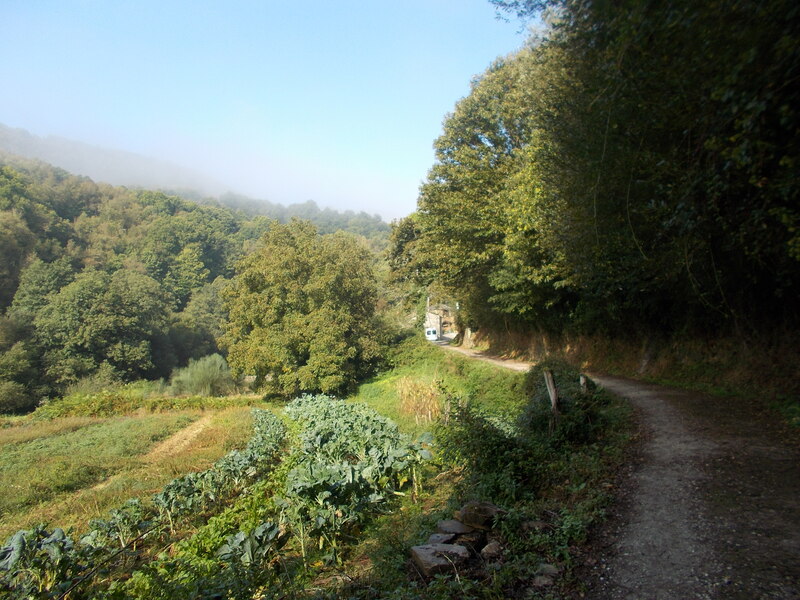
– Funny as it sounds, I have just one picture from this stage. Maybe I didn’t like it too much, or just I was too tired on that day :). Anyway, it can give you an idea of what it is about, in the first part of the walk.
Few tips at the end
- If you’re starting from Sarria, and want to save some money, try to get the credential (the pilgrim passport where you collect the stamps from the places you pass by and sleep at) in one of the local churches, instead of an albergue (where it can cost five times as much). Read more in our article on “Where to get a pilgrim passport in Sarria‘. You also have to count with a bit of waiting time, especially in a high season.
- When reaching Sarria in high season, it makes no sense calling albergues and pensions with best reviews. They will be just full, booked out for months in advance. The only result will be a high phone bill and a headache. On the contrary, in a high season, aim for albergues or hotels with worst reviews, and especially for places that aren’t on Booking.com. That’s your chance of getting the bed even one day in advance, or even just upon arriving to Sarria. Another option is trying new places (ask the locals), that aren’t yet on too many pilgrim applications and websites, and hence do not have that much demand.
Next/Previous stage
- Next stage: Camino Frances Stage no. 26, Sarria – Portomarin.
- Previous stage: Camino Frances Stage no. 24, O Cebreiro – Samos.



![Ultralight Packing List for Camino de Santiago [2025 Edition]](https://caminolovers.com/wp-content/uploads/2022/03/altra-shoes-640-x-480.jpg)
